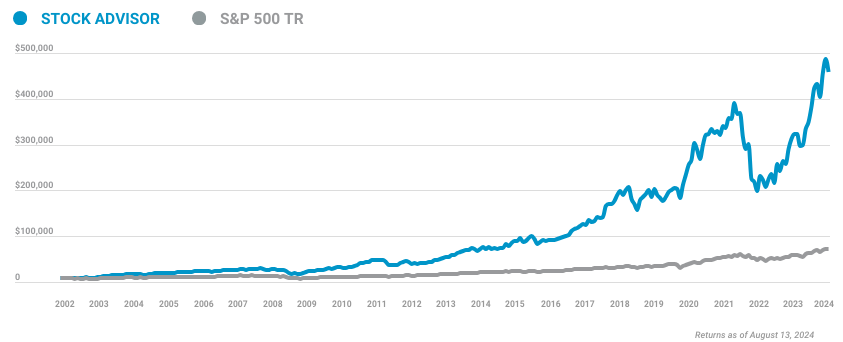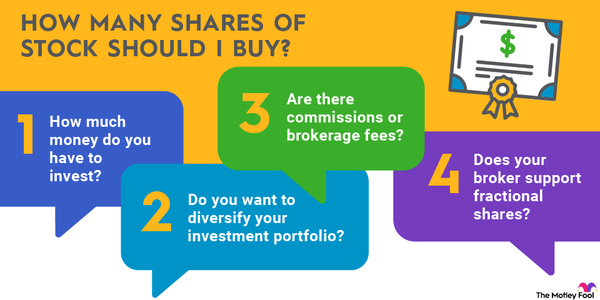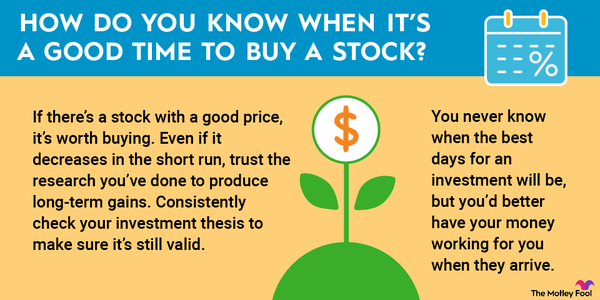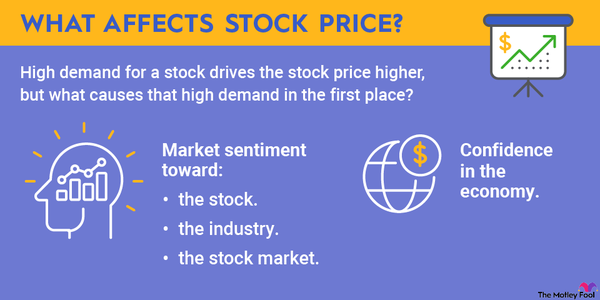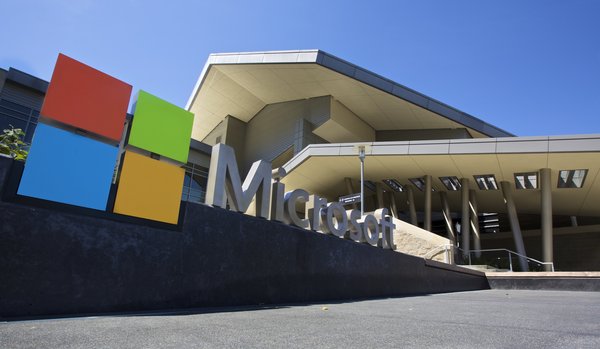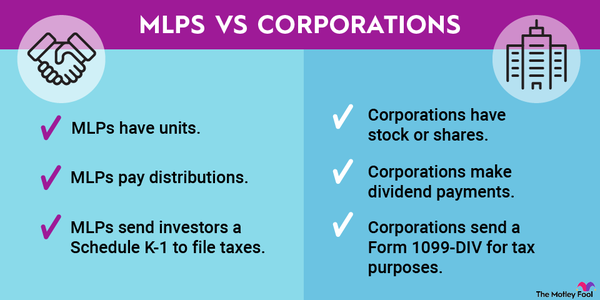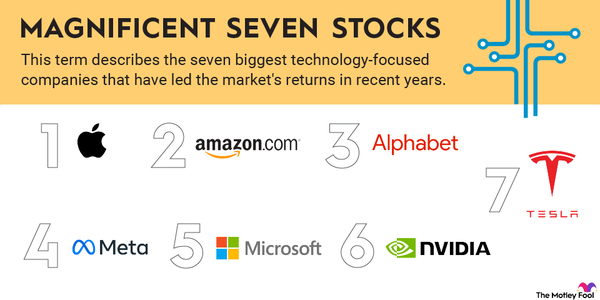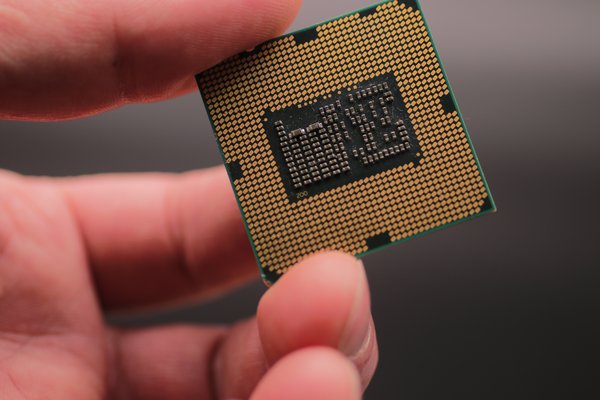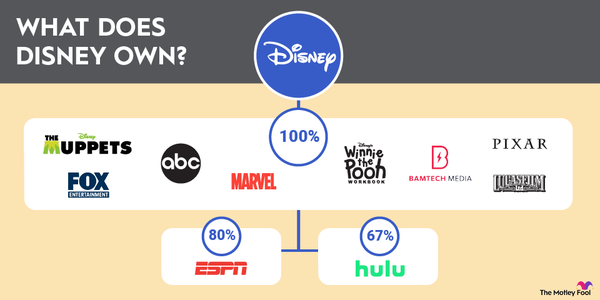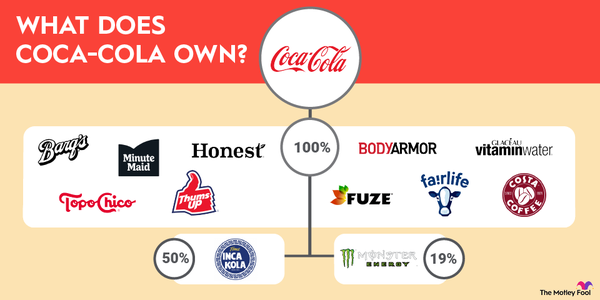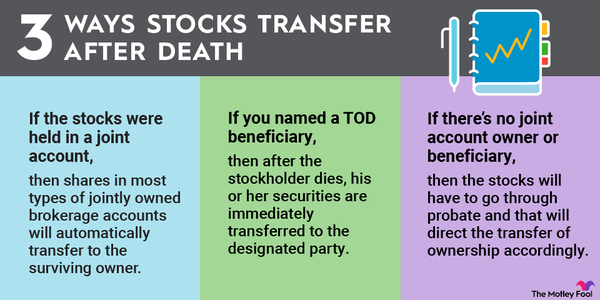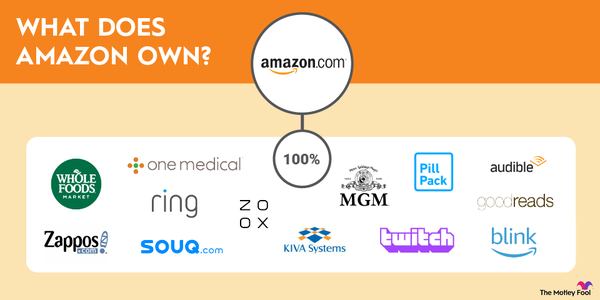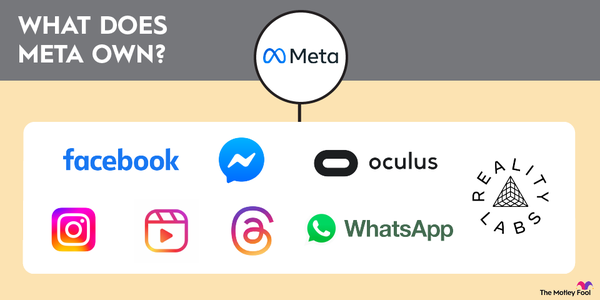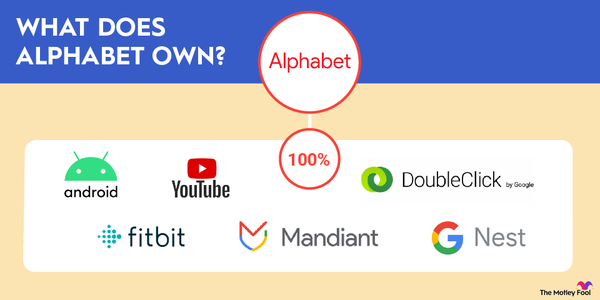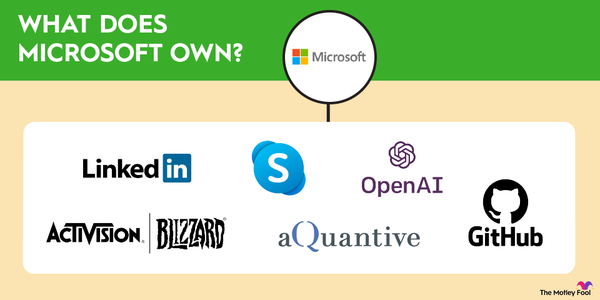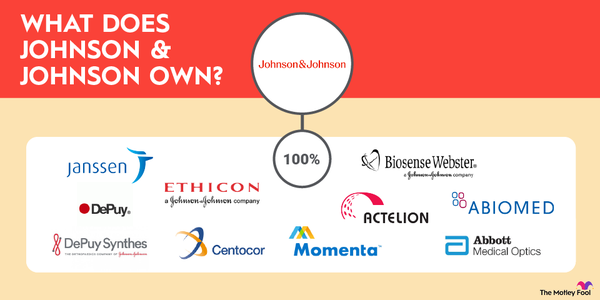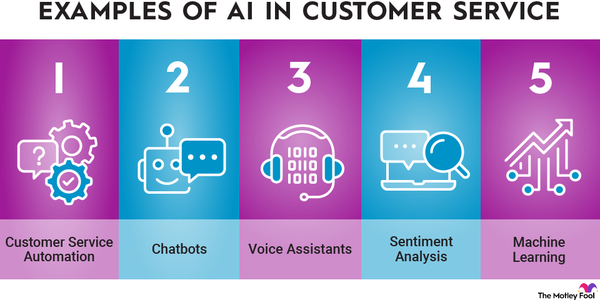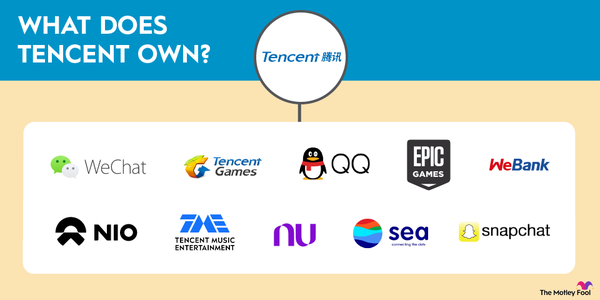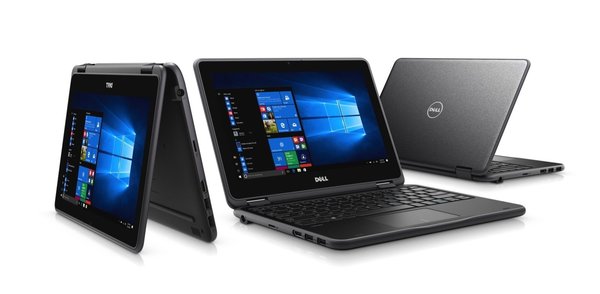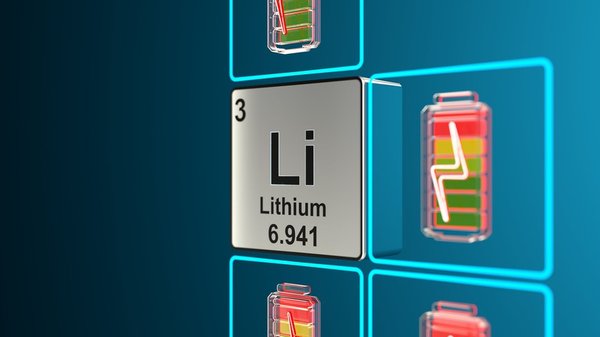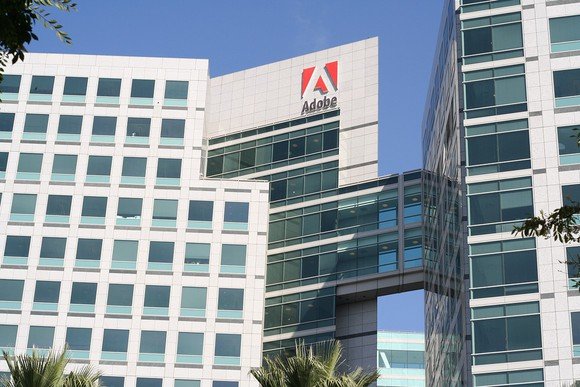Nvidia (NVDA 0.89%) launched 30 years ago with a simple vision: Its founders wanted the gaming and multimedia markets to experience the power of 3D graphics. A few years later, the company revolutionized the computer industry by inventing the first graphics processing unit (GPU).
Nvidia has had a long history of innovation since developing the GPU. Today, the semiconductor company develops and manufactures processors that are vital for data centers, cloud-based platforms, gaming, automotive, and artificial intelligence (AI).
The company's latest innovation is accelerated computing. Nvidia pioneered the technology, which uses specialized hardware to significantly speed up work. It often uses parallel processing to bundle recurring tasks.
The company believes accelerated computing can help unlock the power of AI. Nvidia's GPUs power the AI software behind OpenAI's wildly popular ChatGPT program and other AI innovations.
Fellow tech behemoth Microsoft (MSFT 0.14%) is investing billions of dollars into OpenAI to help take the technology to the next level. Others in the tech sector have followed Microsoft's lead and are investing heavily in AI startups and related infrastructure. This investment spending is driving strong demand for Nvidia's processors. It certainly has been the case in 2024, as its AI-related chip sales have soared.
Accelerated computing is also helping rev Nvidia's profit growth, boosting the company's stock price and making it a potentially excellent long-term investment. Here's a step-by-step guide on buying Nvidia shares and some factors to consider before investing in the technology stock. But first, let's talk about what exactly Nvidia does to make it such a valuable company.
What does Nvidia do?
What does Nvidia do?
While Nvidia stock has soared in popularity as a way to gain artificial intelligence (AI) exposure, many investors aren't sure what the company does. Maybe they've heard of GPUs, maybe they've heard of data centers, or maybe they've heard of AI. The exact nature of Nvidia's business, though, may remain shrouded in mystery.
One of the best ways to ensure investing success is to have a thorough understanding of what companies do before an investor clicks the buy button. Since Nvidia's business is more than just AI, it's worth taking a closer look at what it exactly does.
Nvidia in a nutshell
The company organizes its business into two segments. There's compute and networking, and there's graphics. Accounting for the lion's share of Nvidia's business -- 78% of revenue and more than 97% of operating income for fiscal 2024 -- the compute and networking segment is where Nvidia's AI exposure is located. The company's accelerated computing platforms, for example, help data centers manage the extraordinary computing demands of AI. According to the company, its data center solutions "can scale to tens of thousands of GPU-accelerated servers interconnected to function as a single giant computer."
Rounding out the company's business, the graphics segment includes the GPUs provided for varying markets, including gaming, professional visualizations (workstations), and automotive. For fiscal 2024, these three markets represented 17%, 3%, and 2% of revenue, respectively. While not as robust as the company's data center business, the gaming and automotive markets have represented some aspects of AI. Nvidia's GPUs, for example, are used in various types of autonomous vehicles.
Nvidia is a so-called fabless chip designer, relying on third-party foundries to manufacture and package physical products based on its semiconductor designs.
By designing industry-leading GPUs, Nvidia is at the forefront of the AI explosion. Its platforms are indispensable for data centers attempting to manage the tremendous computing demands associated with large language models and other types of generative AI.
Simply put, Nvidia is a leader in sophisticated accelerated computing. And for applications such as machine learning and AI, in general, accelerated computing is essential.
How to invest
How to buy Nvidia stock
You can buy shares of Nvidia in any brokerage account. If you still need to open one, these are some of the best-rated brokers and trading platforms. Here's a step-by-step guide to buying Nvidia stock using the five-star-rated platform Fidelity.
Fidelity makes it easy to buy stocks. Its website even offers a video tutorial and step-by-step guide. Here's a screenshot of how to place a stock trade via Fidelity.

On this page, fill in all the relevant information, including:
- The number of shares you want to buy or the amount you want to invest to purchase fractional shares.
- The ticker symbol (NVDA for Nvidia).
- Whether you want to place a limit order or a market order. The Motley Fool recommends using a market order because it guarantees you buy shares immediately at the current market price.
Once you complete the order page, click the "Place Order" button at the bottom and become a Nvidia shareholder.
Should I invest?
Should I invest in Nvidia?
Before investing in Nvidia, you must determine whether its stock is a good one for you to buy. Here are some reasons you might consider investing in Nvidia stock:
- You want to invest in a company capitalizing on the long-term demand growth for computing power.
- You want to invest in a profitable and financially strong company.
- You use Nvidia's technology in gaming applications.
- You like the company's investments in providing solutions for exciting growth sectors like AI and autonomous vehicles.
- You believe Nvidia stock can outperform the S&P 500 over the long term.
- You think the company's accelerated computing strategy will drive profit growth in the coming years.
- You believe Nvidia can continue to be an innovator.
- You don't rely on dividend income right now and are content with the company's small payment.
- You understand Nvidia's stock could be volatile and might lose value.
- You want to invest in a founder-led company and believe that co-founder and CEO Jensen Huang can continue growing shareholder value.
Shareholder Value
Conversely, here are some reasons you might decide Nvidia isn't the right stock for you:
- You're worried about a potential slowdown in tech-related spending and its potential effect on Nvidia's data center products.
- You don't understand what the company does or how it makes money.
- You're concerned about AI and unsure it will live up to the hype.
- You're looking for investments with lower volatility than Nvidia stock.
- You're seeking more dividend income than Nvidia currently provides.
- You're concerned about Nvidia's high valuation following its AI-driven rally.
Profitability
Is Nvidia profitable?
Profit growth helps drive stock price appreciation over the longer term, making it an ideal area for beginning investors to focus on before buying shares of any company. Nvidia is spectacularly profitable. The company generated more than $26 billion in revenue in its 2025 fiscal first quarter, up an eye-popping 262% year over year and 18% from the prior quarter.
Nvidia produced almost $15 billion of net income in the quarter. That was up a staggering 629% from the prior year and 21% from the previous quarter. The company's robust profit growth has been a major catalyst for its soaring stock price:
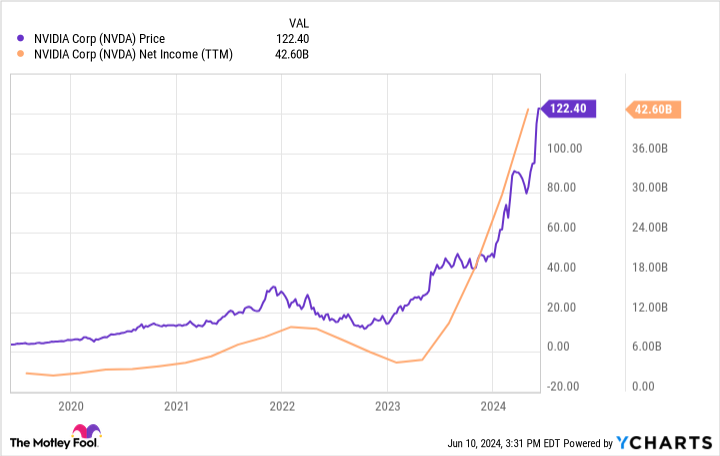
Nvidia also generates lots of cash. In its 2025 fiscal first quarter, the company produced $15.3 billion of cash from operations and $14.9 billion in free cash flow. The cash flow gave it the funds to invest in continued innovation while returning money to shareholders through dividends and share repurchases.
Nvidia believes its investments in accelerated computing position it to capitalize on the explosive growth in AI. This catalyst could continue driving Nvidia's profits higher.
Dividends
Does Nvidia pay a dividend?
Nvidia initiated a dividend in 2012 and steadily increased its payout for the first several years after declaring its initial dividend.
Nvidia stopped increasing its dividend in recent years. However, it declared a monster 150% raise in 2024. Even with that big increase, the company still offered a very low dividend yield in mid-2024 (0.04% compared to 1.4% for the S&P 500).
Although Nvidia doesn't pay a big dividend, it returns significant cash to investors through share repurchases. In 2024, the company authorized a massive $25 billion increase to its share repurchase program, adding to the almost $4 billion remaining under its prior authorization.
ETF options
ETFs with exposure to Nvidia
Instead of actively buying shares of Nvidia directly, you can passively invest in the technology company through a fund holding its shares. Nvidia is one of the world's largest companies by market capitalization and is a widely held stock.
Nvidia is in several stock market indexes, including the S&P 500 and Nasdaq Composite index. As a result, index funds and exchange-traded funds (ETFs) that benchmark their returns against those indexes hold Nvidia stock. According to ETF.com, 528 ETFs held 2.3 billion shares of Nvidia as of mid-2024. The ETFs with the most shares were:
| Exchange-Traded Fund | Assets Under Management | Nvidia Shares Held | Fund Weighting | Position Ranking in Fund |
|---|---|---|---|---|
| SPDR S&P 500 ETF Trust (NYSEMKT:SPY) | $557.2 billion | 298.0 million | 6.2% | Third largest |
| iShares Core S&P 500 (NYSEMKT:IVV) | $053.4 billion | 266.2 million | 6.2 % | Third largest |
| Vanguard S&P 500 ETF (NYSEMKT:VOO) | $488.8 billion | 253.5 million | 6.6% | Second largest |
| Invesco QQQ Trust (NASDAQ:QQQ) | $283.9 billion | 184.9 million | 7.6% | Third largest |
| Vanguard Total Stock Market ETF (NYSEMKT:VTI) | $419.1 billion | 182.9 million | 5.5% | Third largest |
Given its large market cap, Nvidia is among the top five holdings of the five largest ETFs by assets under management (AUM). The SPDR S&P 500 ETF Trust (SPY 0.01%) owns the most shares and has a meaningful portfolio weighting among the biggest ETFs. That makes it a solid option for investors seeking exposure to Nvidia.
Several other ETFs offer greater exposure to Nvidia stock. The VanEck Semiconductor ETF (SMH 1.72%) is a reasonably large ETF with a higher portfolio weighting to Nvidia (almost 20% in mid-2024), making it a possible alternative for investors seeking passive exposure to the stock.
Stock splits
Will Nvidia stock split?
Nvidia completed a 10-for-1 stock split in June 2024, one of several it has completed throughout its history:
| Split Date | Stock Split |
|---|---|
| June 2024 | 10-for-1 |
| July 2021 | 4-for-1 |
| September 2007 | 3-for-2 |
| April 2006 | 2-for-1 |
| September 2001 | 2-for-1 |
| June 2000 | 2-for-1 |
Nvidia's June 2024 stock split brought its share price from a pre-split level of more than $1,200 to around $120 a share (and it was down below $110 a share in early August). That's a much more accessible level for investors. However, if the share price continues to rise, Nvidia might join the list of companies with an upcoming stock split once again.
Related investing topics
The bottom line on investing in Nvidia stock
Nvidia's continued innovation has helped drive the company's profit and stock price higher over the years. The company's investments in accelerated computing positioned it to capitalize on the enormous potential of AI, igniting its earnings and stock price. Nvidia believes it's still in the early innings of the AI boom, which could make it a great long-term investment.
FAQ
How to invest in Nvidia stock: FAQ
Can I invest in Nvidia stock?
Nvidia is a publicly traded company. Anyone with a brokerage account can invest in its stock.
Where can I invest in Nvidia?
You can invest in Nvidia through a brokerage account. It's easy to buy shares of Nvidia. Open and fund a brokerage account, fill out the order page, and submit the trade.
Is Nvidia a good investment?
Nvidia has been an outstanding investment over the years. As of mid-2024, Nvidia had delivered a more than 73% average annual return to its investors over the last 10 years. That significantly outperformed the S&P 500 (10.7% average annual return).
While past outperformance is no guarantee of future success, Nvidia is in an excellent position to continue producing outsize returns. It's a leader in making semiconductors for AI, which has become a major growth driver for the company.
Will Nvidia stock split?
Nvidia has completed seven stock splits in its history, with the last one (10-for-1) completed in 2024 when shares were about $1,200. Given the size and recency of its latest split, Nvidia likely won't complete another one any time soon.
What will Nvidia be worth in five years?
There are various opinions regarding what Nvidia will be worth in five years. In mid-2024, the company has an astounding $3 trillion market cap. One analyst who follows the company believes it could be worth $10 trillion by 2030 or sooner.
However, others are less optimistic. Another analyst pointed out that the company needed to grow its earnings at a 70% annual rate over the next five years, more than double the rate the analyst community expected, to justify its market value in mid-2024.
If the company can continue growing at a blistering pace, it could double or triple in value over the next five years. However, if its growth slows, its stock could come back down to earth.
What is the stock price prediction for Nvidia in 2025?
Predictions for Nvidia's stock price over the next year are all over the map in mid-2024. The consensus 12-month price target among Wall Street analysts who follow the company is $135 per share (below its stock price of around $110 per share in mid-2024). Analysts have a wide range of predictions, with the lowest target at around $50 a share and the highest at $200.








